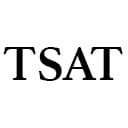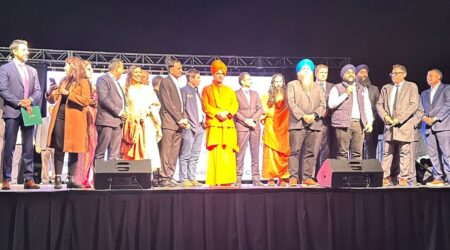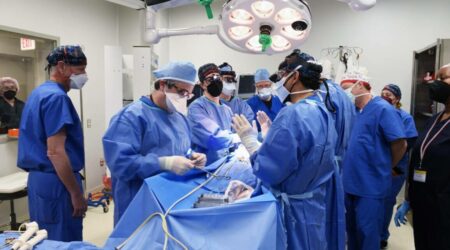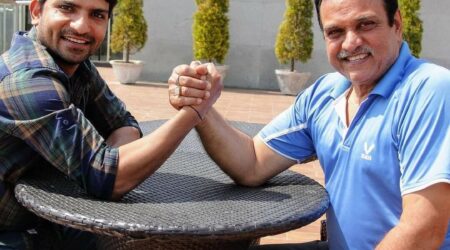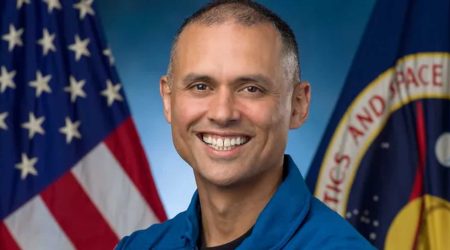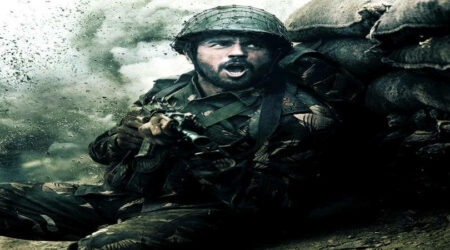By Dr. Gautam Pareek
While Indians have been coming to American shores for over a hundred years, the large influx of medical professionals has its origins in the tail end of the Vietnam War. Beginning in 1960, there was a shortage of doctors in the USA, UK, Canada, and other parts of the world. The US had a need for physicians and surgeons and well-trained Indian doctors were welcomed like prized athletes.
My father migrated to the US in the 1970s as a surgeon. He was a general surgeon in an academic institution in India who later specialized in Urology and practiced in NY State for almost 50 years. He used to receive telegrams while still in India asking how many bedrooms he needed in the apartment, and what his size was so they could order his lab coats and scrubs.
When he landed in the US, car service was there at the airport to pick him up. We were allotted a two-bedroom fully furnished apartment with all utilities paid for and free laundry service for linens. A beautiful view of the Empire State Building, Chrysler Building, and the then famous “Pan Am” building was there to be enjoyed from the flat. The medical legacy continued in the family with me and my younger brother joining the medical fraternity. My wife and his brother are also both doctors, and now our daughter is also a doctor.
Today, every 7th doctor in the US is Indian. The American Association of Physicians of Indian Origin (AAPI) represents the values and interests of more than 80,000 practicing physicians in the US. In addition, it also serves as a platform for more than 40,000 medical students, residents, and fellows of Indian origin in this country.
But it has not been a cakewalk for everyone who migrated to realize the American dream. Let’s fast forward fifty years, which saw a very difficult time for ambitious Indian doctors trying to secure residencies and having to work in lesser roles at hospitals, labs, and clinics in the hope of securing a training spot-many languishing for years in the process. By virtue of their hard work, intelligence, clinical knowledge, and operating skills, slowly and slowly they penetrated into the healthcare system and started contributing to the development of the healthcare industry.
I have seen the hard work of many fully trained doctors referred to as “students,” who swallowed their pride, worked in menial medical field jobs, raised kids, and after many trials and tribulations, later bring ‘mithai’ – sweet boxes celebrating their success, when they finally were able to secure a spot.
I mention this poignant fact because I would always stop and look at the relief on their faces as they were sharing their good fortune – a fortune based entirely on sheer perseverance. The perseverance and resilience of these talented people showcase the very characteristics seen in other immigrants also who have come to this great country over the last 250 years, looking for a better life and working hard to secure their kids’ future.
This timeframe also saw Indian doctors penetrate the smallest of towns and work in the poorest of clinics all the while serving the needs of these areas where most American-born doctors would not go thus establishing Indian doctors as a good stereotype in American society. Despite the hardships and trials, many brilliant well-trained doctors came from India and have made their mark from the top echelons of Ivy League universities to the smallest town hospitals and clinics.
In those days people would ask, “Are you a doctor,” to any Indian just as they ask today “are you an engineer.”
Indian-origin doctors are a societal staple in this country making up just shy of 30 percent of all US physicians. They occupy every level of the health care landscape including the current surgeon general. No medical TV drama or movie scene is complete without the presence of an Indian doctor in front and center or in the background.
The medical profession is a people’s profession. Besides being a science, the practicing needs art and skills with lots of compassion and empathy. The genuine desire to help the patients comes in-built in Indian doctors with their cultural values.
There is a long list of contributions of Indian doctors and medical researchers that reads like a who’s who list. It also includes people like Dr. V. Vijay, a pilot, and Cardio-thoracic Surgeon. During the pandemic, he flew a Boeing 747 to the entire World to bring essential medical supplies and worked at the hospital in New York City.
Dr. Vijay hails from Madanapalle in the Chittoor district of Andhra Pradesh, India, and did his primary education in Hyderabad and Chennai. Dr. Vijay studied MBBS from Sri Venkateswara Medical College, Tirupati, and in 1989, went to Trinidad-West Indies to work in Vascular Surgery and Transplantation. Dr. Vijay was the surgical member of the Team that performed the First live-related Kidney Transplantation in the Caribbean. His accomplishments are too extensive to be listed here and something most people wouldn’t even be able to conceptualize.
He is the very best among us, embodying hard work, constant thirst for learning, and an unbridled desire to help those in need. There cannot be a better example of “American Exceptionalism” brought to you in a “Made in India” package. In other words, grounded in the best values of our Indian culture and the opportunity this country provides is the “secret sauce” not only for Indian doctors but Indian professionals in general.
The impact of Indian medical professionals on American society which started with my father’s generation and which has had an indelible effect on American society, will continue with his granddaughters and beyond in shaping the healthcare landscape of this country.
As we celebrate the birth of this country on July 4th, let’s try to reflect on the freedoms and opportunities this great nation has afforded us and our previous generations which has made us highly successful in the medical field and beyond. At a time of great political polarization, this is something we can all agree upon and be thankful for. Happy fourth!

Dr. Vijay hails from Madanapalle in the Chittoor district of Andhra Pradesh, India, and did his primary education in Hyderabad and Chennai. Dr. Vijay studied MBBS from Sri Venkateswara Medical College, Tirupati, and in 1989, went to Trinidad-West Indies to work in Vascular Surgery and Transplantation. Dr. Vijay was the surgical member of the Team that performed the First live-related Kidney Transplantation in the Caribbean. His accomplishments are too extensive to be listed here and something most people wouldn’t even be able to conceptualize.
He is the very best among us, embodying hard work, constant thirst for learning, and an unbridled desire to help those in need. There cannot be a better example of “American Exceptionalism” brought to you in a “Made in India” package. In other words, grounded in the best values of our Indian culture and the opportunity this country provides is the “secret sauce” not only for Indian doctors but Indian professionals in general.
The impact of Indian medical professionals on American society which started with my father’s generation and which has had an indelible effect on American society, will continue with his granddaughters and beyond in shaping the healthcare landscape of this country.
As we celebrate the birth of this country on July 4th, let’s try to reflect on the freedoms and opportunities this great nation has afforded us and our previous generations which has made us highly successful in the medical field and beyond. At a time of great political polarization, this is something we can all agree upon and be thankful for. Happy fourth!

(Dr. Gautam Pareek is a practicing Internist in the San Francisco Bay Area)
==
Disclaimer: The views expressed are not necessarily those of The South Asian Times
